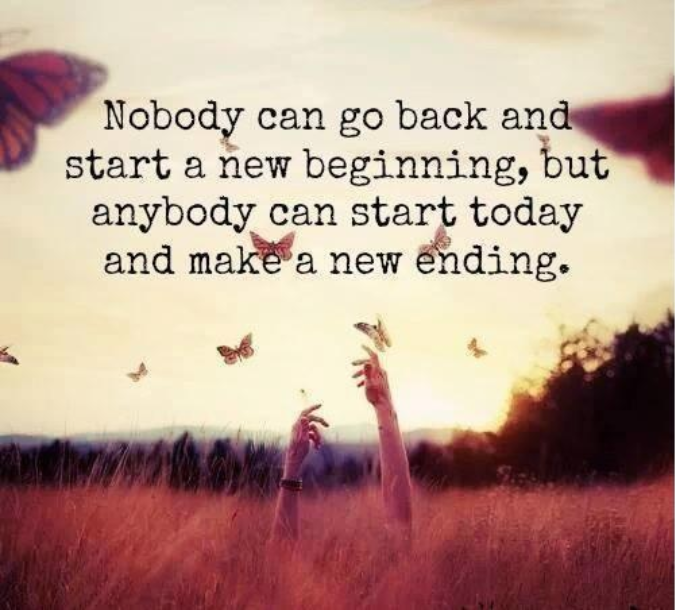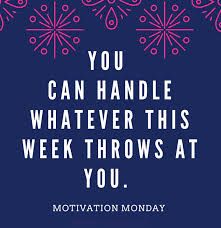
As a Licensed Psychotherapist, I believe the therapeutic process requires an assessment of the individual challenges one faces along with the various family and institutional systems that influence one’s individual challenges. I am an advocate for my clients and empower them to be their own best advocate. Increasing self-awareness and developing more effective coping skills are important aspect of therapy. Understanding what your goals are and determining together how best to achieve these goals is an important aspect of psychotherapy.
In addition to being a Psychotherapist, I am a regular guest lecturer at the USC School of Social Work, where I share my experience, intuition, and guidance to graduate students. I also produce and co-host a podcast on counseling and therapy. I invite you to view my podcast here: www.talkingtherapypodcast.com
Contact John Webber, LMFT today

“My ability to provide ADHD Coaching and Hypnotherapy in addition to Psychotherapy allows me to assist individuals with a variety of therapeutic techniques. I welcome whatever a challenges a Client must overcome in order to achieve their full potential. We all deserve SUCCESS.”

SPECIALTY SPOTLIGHT:
ADHD:
Veronica assists individuals with ADHD in both private clinical and school based settings. She uses coaching techniques as well as hypnosis and behavioral therapy to help manage ADHD. She is certified in Specialty Hypnosis for ADHD and Coaching.
Children and Families:
Veronica combines her warm personality and strong clinical skills to help clients of all ages overcome problems and achieve stronger mental health. She has a special interest in working with children and teens, and her open honest style creates a safe comforting space for young people to deal with issues ranging from anxiety, depression, self-esteem, peer pressure, and academic success, to teen relationships, family conflict, and behavioral problems. She has extensive experience working with school-aged children treating a variety of issues including ADHD, and adjustment to divorce, anxiety, phobias and many other child life issues. Additionally, she has expertise in addressing parenting issues and loves to help families increase their positive interactions and help them find their unique strengths. She gained experienced working with couples, families and individuals, adults, children and teens at a counseling center for transition and loss and working at a community based mental health agency.
Please visit our Providers Section to Learn MORE about Veronica Davies, LMFT…

Change is hard; there is no question about that. Making positive life changes may seem simple on the surface, but good intentions only go so far. Every day, people with noble ambitions fail in the shadows of daily ruts, habits, and negative behaviors. That is because change is not a single decision that one makes, but rather a series of stages that must be completed in order to achieve success. Whether you need to improve your health, take control of your finances, or put an end to bad habits, change is always possible.
To fully comprehend the process of change, it helps to first understand the transtheoretical model of behavior change. The model is based upon decades of research and is used by counselors, physicians, and other professionals all over the world. It breaks down the process of change into six stages:

Each of the first five stages is a constant in the process by which a person modifies negative behaviors. One stage cannot be accomplished without successfully surpassing the previous stages. However, the sixth stage – relapse – is variable and may or may not occur at any point in the process.
Another variable is the amount of time a person spends in each stage. Those in early stages may be hindered and even delayed by complex, action-oriented efforts, as they are not mentally prepared for the task. On the other hand, those in latter stages may relapse or face resistance without an actionable plan that will facilitate progress.
The stages of change may sound logical on paper, but applying them to your own personal life transitions is very different. By understanding the various phases that you will go through over time, you can put less emphasis on your failures and more emphasis on your readiness and willingness to change. In other words, success does not happen overnight.
Everyone begins here. It is the point in the change process in which change is not even an option or something to be considered. During this time, a person may either be in denial about a particular problem or otherwise given up on ever being successful due to so many failed attempts to change. A person in the pre-contemplation phase cannot be forced to make a change, but he can be motivated by knowledgeable information or the encouragement of a trusted friend, family member, or mentor. A person might require greater awareness about the long and short-term impact of negative behaviors in order to move to the next stage.
The contemplation stage is the point in which a person identifies that there is a problem behavior that needs to be addressed. During this time, it may be easy to recognize the benefits of change, but the challenges that come with change may lead to feelings of ambivalence and dissuasion. People in the contemplation stage must be motivated by the benefits of change more so than the perceived benefits of continuing with a negative behavior pattern. They may also benefit from acknowledging past and present successes, as well as the potential obstacles to success.
The preparation phase is the bridge between thoughts and action. During this time, a person may dip their toes in the water with small changes or experiments with modified behaviors. For someone with an eating disorder, this might mean tasting a different type of food than would normally be acceptable. For someone who struggles with alcohol abuse, it might mean cutting back on alcohol consumption, but not eliminating it completely.
The action phase is the one that most people want to jump into right away; yet it is only successful when the prior readiness stages have been completed. During the action phase, a person is actively replacing negative behaviors with more meaningful activities. They might make a public announcement to friends and family about their plans to change. Social and professional support are often key to success at this stage, as are intentional daily rituals designed to prevent relapse.
Maintenance – also known as relapse prevention – is the point at which a person has successfully implemented lifestyle changes and is now working to protect the results. It is important to continue setting goals and maintain support from others, as well as develop skills for relapse prevention.
Relapse is a reoccurrence of the original problem. It is important to recognize that relapse is not necessarily failure, but rather an opportunity to learn and develop new problem-solving skills. A relapse does not mean a person must start the process of change over again, but rather must identify new solutions to obstacles as they arise.
Have you ever observed others glued to their phone, couples sitting out at dinner looking at their individual phones, your children irritable and angry when they are separated from their phone or they lose “bars” (bars is cell phone reception)? The new term is PHUBBING or Phone Snubbing.
 How many of us are attached to our cell phones, do not look up when someone is talking or are constantly clutching our phones as if we were Linus with a security blanket. How many of us wonder why our clients balk when we ask them to digitally detox and how many of us are willing to do the same? Try taking a trip to Yosemite or Big Sur where cell phone reception is sparse and you can reconnect with nature and yourself.
How many of us are attached to our cell phones, do not look up when someone is talking or are constantly clutching our phones as if we were Linus with a security blanket. How many of us wonder why our clients balk when we ask them to digitally detox and how many of us are willing to do the same? Try taking a trip to Yosemite or Big Sur where cell phone reception is sparse and you can reconnect with nature and yourself.
Here is an interesting study from Baylor University, “My life has become a major distraction from my cell phone: Partner phubbing and relationship satisfaction among romantic partners” James A. Roberts, Meredith E. David Hankamer School of Business, Baylor University, One Bear Place #98007, Waco, TX 76798, USA
The team developed the “Partner Phubbing Scale,” which they believe is significant for demonstrating that phubbing is “conceptually and empirically different” from attitude toward cellphones, partner’s phone use.
The first survey comprising 308 adults helped them develop the nine-item scale of typical smartphone behaviors that participants identified as snubbing indicators. The scale includes statements like “My partner places his or her cellphone where they can see it when we are together” and “My partner glances at his/her cellphone when talking to me.”
In the second survey with 145 respondents, the team used the scale on couples and measured areas such as relationship and life satisfaction, depression, and “anxious attachment” or those experienced by people who feel less secure with their partner.
 Co-author and assistant marketing professor Meredith David, Ph.D., said the findings suggest that the more one party interrupts couple time together through cellphone use, the less likely the other person will be satisfied in the relationship. This could lead to enhanced depressive feelings and lower well-being of that individual, warned David.
Co-author and assistant marketing professor Meredith David, Ph.D., said the findings suggest that the more one party interrupts couple time together through cellphone use, the less likely the other person will be satisfied in the relationship. This could lead to enhanced depressive feelings and lower well-being of that individual, warned David.
How then should one make sure not to “phub” or get phubbed? David advised being more mindful of how much time is being spent using one’s phone. Learn the interruptions caused by phones and how they can be harmful to the relationship, said David.
This research is also part of Roberts’ new book, Too Much of a Good Thing: Are You Addicted to Your Smartphone.
Are you a smartphone junkie? Rate each item on a scale of 1 (“completely disagree”) to 7 (“strongly agree”) and tally up your total score to find out.
1. I would feel uncomfortable without constant access to information through my smartphone.
2. I would be annoyed if I could not look information up on my smartphone when I wanted to do so.
3. Being unable to get the news (e.g., happenings, weather, etc.) on my smartphone would make me nervous.
4. I would be annoyed if I could not use my smartphone and/or its capabilities when I wanted to do so.
5. Running out of battery in my smartphone would scare me.
6. If I were to run out of credits or hit my monthly data limit, I would panic.
7. If I did not have a data signal or could not connect to Wi-Fi, then I would constantly check to see if I had a signal or could find a Wi-Fi network.
8. If I could not use my smartphone, I would be afraid of getting stranded somewhere.
9. If I could not check my smartphone for a while, I would feel a desire to check it.
If I did not have my smartphone with me …
10. I would feel anxious because I could not instantly communicate with my family and/or friends
11. I would be worried because my family and/or friends could not reach me.
12. I would feel nervous because I would not be able to receive text messages and calls.
13. I would be anxious because I could not keep in touch with my family and/or friends.
14. I would be nervous because I could not know if someone had tried to get a hold of me.
15. I would feel anxious because my constant connection to my family and friends would be broken.
16. I would be nervous because I would be disconnected from my online identity.
17. I would be uncomfortable because I could not stay up-to-date with social media and online networks.
18. I would feel awkward because I could not check my notifications for updates from my connections and online networks.
19. I would feel anxious because I could not check my email messages.
20. I would feel weird because I would not know what to do.
How You Score – Nomophobia (Fear of being out of mobile phone contact)
20: Not at all nomophobia. You have a very healthy relationship with your device and have no problem being separated from it.
21-60: Mild nomophobia. You get a little antsy when you forget your phone at home for a day or get stuck somewhere without Wi-Fi, but the anxiety isn’t too overwhelming.
61-100: Moderate nomophobia. You’re pretty attached to your device. You often check for updates while you’re walking down the street or talking to a friend, and you often feel anxious when you’re disconnected. Time for a digital detox?
101-120: Severe nomophobia. You can barely go for 60 seconds without checking your phone. It’s the first thing you check in the morning and the last at night, and dominates most of your activities in-between. It might be time for a digital intervention?
Copyright © 2015 Elsevier Ltd. All rights reserved. License Number 3806821038538 to reproduce on this site as well as Journal article purchased “My life has become a major distraction from my cell phone: Partner phubbing and relationship satisfaction among romantic partners” James A. Roberts, Meredith E. David Hankamer School of Business, Baylor University, One Bear Place #98007, Waco, TX 76798, USA
 The holidays are an exciting time each year full of family, friends, and celebration. As fun as this season can be, it can also be a source of great stress – something that can trigger relapse in a person who is newly sobriety. In fact, of all the holidays, Christmas and New Years are the most common times for recovery setbacks. This year, take proactive steps to combat holiday stress before it becomes overwhelming. Read on to learn our top tips for beating stress this season.
The holidays are an exciting time each year full of family, friends, and celebration. As fun as this season can be, it can also be a source of great stress – something that can trigger relapse in a person who is newly sobriety. In fact, of all the holidays, Christmas and New Years are the most common times for recovery setbacks. This year, take proactive steps to combat holiday stress before it becomes overwhelming. Read on to learn our top tips for beating stress this season.
Set a Budget
Finances are one of the number one causes of stress each December. Gift-giving takes center stage not only for family, but also for friends and co-workers. You may even find yourself buying gifts for teachers, hairdressers, and other professionals who serve you and your family throughout the year. As the bills start to pile up, overspending can make you feel like you’re in over your head – a dangerous stage for self-medication and unhealthy coping mechanisms. Instead of going into debt this December, set a strict budget and stick to it. Cut back on the number of gifts you buy, or find ways of lowering your costs, such as by baking cookies instead of giving an expensive gift. If possible, avoid the temptation to overspend by turning off holiday advertising and find free or low-cost ways of enjoying the holidays with your friends and family.
Plan Ahead
Nothing induces stress like scrambling at the last minute. Whether it’s tuning up the car before traveling, shopping for gifts, or preparing a menu, the earlier you begin preparing, the less likely you are to feel overwhelmed later on. Take time to plan your party outfits and wrap your gifts ahead of time. Not only will it relieve pressure to do it all at once, but it will also free up time to take care of the unexpected.
Create a Support System
Sometimes, it is other people who become a primary source of stress. Perhaps it is the person who steals your parking spot or contentious family members who cause your blood pressure to rise. In other cases, it may be old friends who undermine your sobriety by inviting you to gatherings where there will be alcohol or other substances. Whatever the case, it is important to lean on a support system of people who will help you cope with holiday stress and temptations in a healthy way. Fill up your schedule with sober friends, or spend more time with your recovery program. If you still have time to spare, try spending some time volunteering, engaging in healthy, holistic and stress-busting activities like meditation and yoga, or even picking up a few more hours at work.
Whether you have a history of overeating or struggled with substance abuse in the past, nothing can sway you faster than the holidays. With food and alcohol freely available, you may find it a challenge to remain sober this time of year. Don’t take on holiday stress alone. If you find it challenging to remain sober during the holidays, contact us here at RecoveryNOW to discuss ways you can combat stress this season.
 In order to continue to provide information on domestic violence and abuse during October National Domestic Violence Awareness month, we have prepared the following article.
In order to continue to provide information on domestic violence and abuse during October National Domestic Violence Awareness month, we have prepared the following article.
Men who batter women come from all socioeconomic, racial, ethnic, and religious backgrounds. The abuser may be young or old, blue collar or white collar, highly paid or unemployed. As a matter of fact, it is believed that upper socio-economic domestic violence and abuse is under-reported and concealed. He may be a drinker or nondrinker. He may use drugs or not use at all. Batterers represent all different kinds of personalities, family backgrounds, and professions. There is no typical batterer. The majority of batterers are only violent with their intimate partners. One study found that 90% of abusers do not have criminal records and that batterers are generally law-abiding outside the home. It is estimated that only 5-10% of batterers commit acts of physical and sexual violence against other people as well as their female partners. Although there is no personality profile of the abuser, there are some behaviors that are common among men who batter their partners. These include:
■Denying the existence or minimizing the seriousness of the violence and its effects on the victim and other family members
■ Showing extreme jealousy and possessiveness which often leads to isolation of the victim from family and friends
■ Refusing to take responsibility for the abuse by blaming it on loss of control, the effects of alcohol or drugs, frustration, stress, and/or the victim’s behavior
■ Holding rigid, traditional views of sex roles and parenting, or negative attitudes toward women in general
Typically, when trying to understand why men batter, people want to look for what is “wrong” with the abuser, believing that they must be mentally ill in some way. However, battering is not a mental illness that can be diagnosed, but a learned behavioral choice. Nonetheless, we often find that batterers suffer from Depression, Anxiety, Bipolar Disorder, OCD, ADHD and/or Substance Abuse. An evaluation to determine if a mental illness exists is always important. Treating the underlying illness or substance abuse problem may allow the individual to regulate their mood and behavior and eliminate battering behavior. Feelings of anger and rage are often associated with men’s experience of Depression.
Men may use physical, emotional and/or sexual abuse to maintain power and control over their relationships with their female partners. They have learned that violence works to achieve this end. The vast majority of batterers grew up in homes where they witnessed violence or were abused themselves. While many batterers have substance abuse problems, there is no evidence that alcohol or drugs cause violence behavior. However, battering incidents involving alcohol or drug use may be more severe due to being under the influence. It should also be noted that many batterers may only be violent with their partners when under the influence of drugs and alcohol.
Most batterers find themselves in court-ordered anger management programs. Because battering is a learned behavior, it can be unlearned. These programs are designed specifically for batterers are the preferred method for addressing abusive behavior. Programs for batterers are not the cure-all for domestic violence, but one facet of a coordinated community response to the problem.
Individual psychotherapy is the only possible treatment to discover the core issues behind one’s battering behavior. Anger management groups do not provide an opportunity to understand why one batters. Groups allow one to develop skills to prevent abuse and identify the triggers of abuse, but they do not provide an opportunity to define boundaries, improve self-esteem and process trauma. These are the other essential components in addition to anger management skills of treatment that allow for long-term recovery from battering.
Couples therapy is contraindicated for domestic violence. A skilled Therapist should screen couples attending Therapy before they walk in the door, since couples therapy exacerbates domestic violence. Couples should only attend therapy once the violence has stopped for 90 or more days. Often this only happens once the batterer attends therapy individually for a period of time. Ideally a batterer should attend their own individual therapy with their own Therapist and a separate couples Therapist should provide couples therapy. The lines should never be blurred in the therapeutic relationship.
Just as victims of domestic violence require a safe non-judgemental environment to understand and change their behavior, so do individuals who batter. Seeking therapy is a sign of recognizing the problem and a desire to change. An individual must first understand why the behavior exists in order to make long-term changes. This same concept also applies to victims of domestic violence. Overcoming the psychological reasons why someone batters is the most important first step to rebuilding your relationship with your partner. Many individuals may also require a Therapist skilled in treating substance abuse in order to change their behavior.
Battering is a behavior that is often passed on from one generation to another. In order to break the cycle all family members including children who witnessed violence must receive help, Due to the fact we have many Therapists in our group, we have the ability to provide all the necessary services and coordinate treatment amongst the Therapists in our group. If you are interested in changing your battering behavior, our RecoveryNOW Therapists are here to assist all family members with recovery from domestic violence. We are committed to restoring family peace.
 October is Domestic Violence Month. The signs of physical abuse are obvious, but many women suffer the invisible abuse of emotional violence that leaves them confused and disoriented. There are many tactics to this kind of abuse, but an overriding sign is that real communication is impossible, which means nothing ever gets resolved in the relationship. In fact there is a constant barrage of insidious mental bullying that is hard to catch at first if you don’t know the signs.
October is Domestic Violence Month. The signs of physical abuse are obvious, but many women suffer the invisible abuse of emotional violence that leaves them confused and disoriented. There are many tactics to this kind of abuse, but an overriding sign is that real communication is impossible, which means nothing ever gets resolved in the relationship. In fact there is a constant barrage of insidious mental bullying that is hard to catch at first if you don’t know the signs.
Your idyllic relationship starts to unravel the moment you finally bring up a need or concern of your own ( a few months into the relationship when the honeymoon phase has ended), and you’ll find yourself baffled by their cruelty. One of the easiest signs to spot is the frequent use of the silent treatment as emotional torture. Anytime you bring up any concern or need, you are made to feel like you are starting a fight, and one of the most immediate responses is the silent treatment. This silent treatment generally lasts a few days to a few weeks. Out of the blue, they will no longer respond to your texts or phone calls, often you’re not even sure what happened. You feel disoriented and confused. Silent treatment is deliberately being used as a punishment. In fact, silent treatments are one of the most destructive forms of abuse in a relationship. Here are some more signs to watch out for:
Trust your gut instinct. If you start to feel you are being used and abused, you probably are. All of these behaviors are meant to lower your expectations of them, so they are able to have power and control in the relationship. The sooner you recognize the warning signs and demand change or leave the relationship, the better it will be for everyone. The best way to find out if your partner is capable of having a healthy relationship is to take the relationship slow, and by having a disagreement early on (in the first few months) to see if there is a constructive approach to resolving the disagreement, that involves a healthy give and take. That is what reciprocity is about. Reciprocity tells you they value how you feel and want to see you happy. A healthy relationship should encourage you to enjoy your family and friends and have your own hobbies and interests. What good is a relationship that tears you down.
You may visit our webpage information on domestic abuse & violence for additional handouts and information.